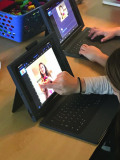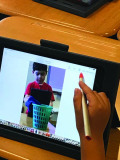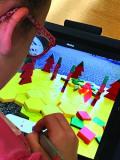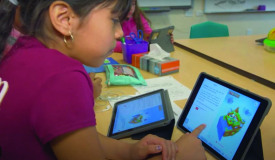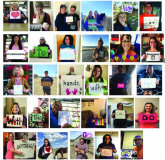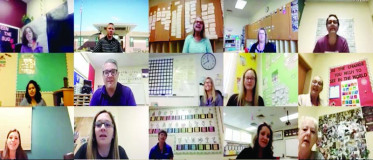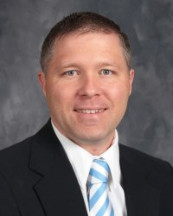No products in the cart.
A School and a Virus
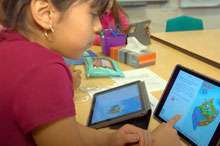
Turning Impossible into “I’m Possible”
By John Carlisle
Photos courtesy of Wilder Elementary School
At the beginning of the 2019-20 school year, a student came to Wilder Elementary who did not speak English. Having to learn a new language might have seemed impossible to her, but she came to school and practiced each day. When it became difficult—and it did—she turned to those she trusted for support. Her mother was providing for the family and did not have a lot of time to help, and so the student would come to my office as principal, or she’d find a teacher to talk to. One particular mentor worked with this little girl each day and was very helpful. And then in early 2020, the pandemic hit. School was closed, along with just about everything else. The student’s efforts could have collapsed at that point, but her many mentors kept in contact online, and her mother helped at home. By the time summer arrived, this little girl used English almost as well as the other students.
When education was spun on its heels and turned upside down last spring and the traditional way of teaching students became no longer feasible or practicable, I felt the twist and jolt of it during the many conversations we had about closing the school. We all wanted what was best for the students, and most of us knew that meant undertaking the process of a transition to remote learning. I remember standing in the empty hallway of the school wondering over and over again, am I doing what is best for the students? I knew having them in the building was clearly best for their learning as they engaged with their peers and mentors. Still, the school had been closed, and this was what I had to do as its leader. It was now important for their health and safety to be away from interactions with their peers for a time.
Once we started up again, we quickly made the preparations that had been decided upon. Parents came by in cars to pick up materials, directions, and iPads for learning at home. Like the little girl who learned English, our teachers now faced a seemingly impossible challenge. They had to continue to provide personalized learning paths for students who were no longer in the classroom. A lot was happening at once, and there was still more work to do. In Wilder, our school’s team pulled together in its commitment to students and families to provide more than just schooling. The families and students also relied on our school for support with meals, transportation, and communication. We had many discussions at the state level, along with the local health department, to provide these resources in a safe and efficient way.
Wilder Elementary students use touch screens.
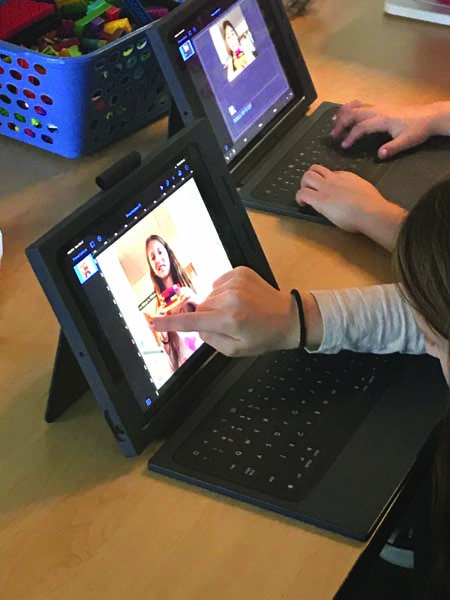
Students used a crayon marker.
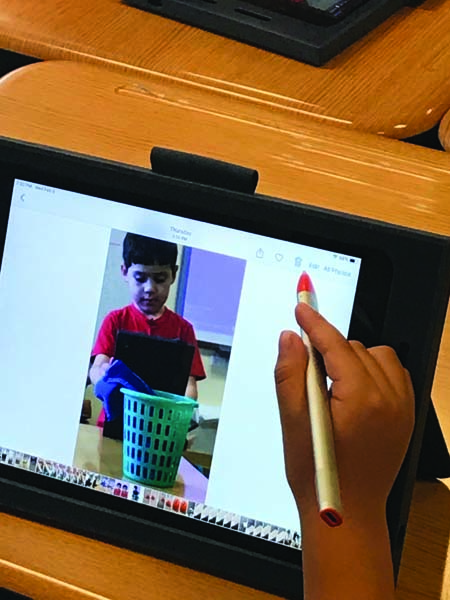
Building an image.
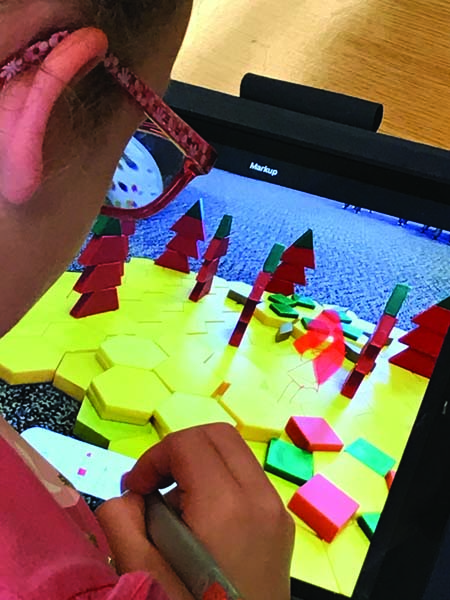
Online learning.
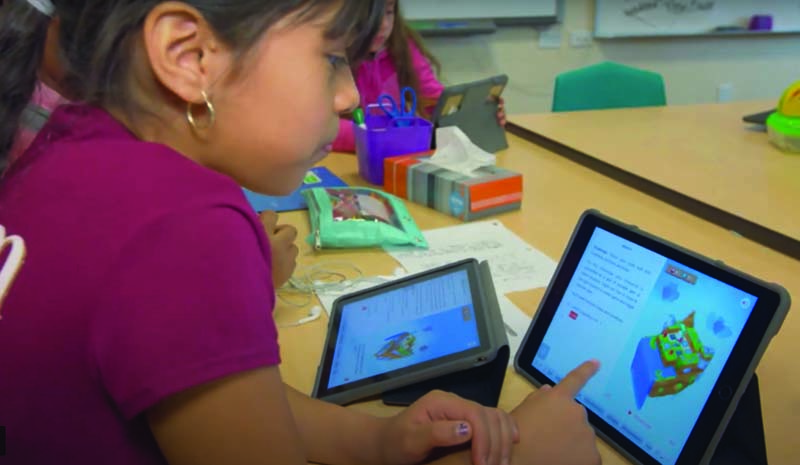
Wilder Elementary Facebook page montage.
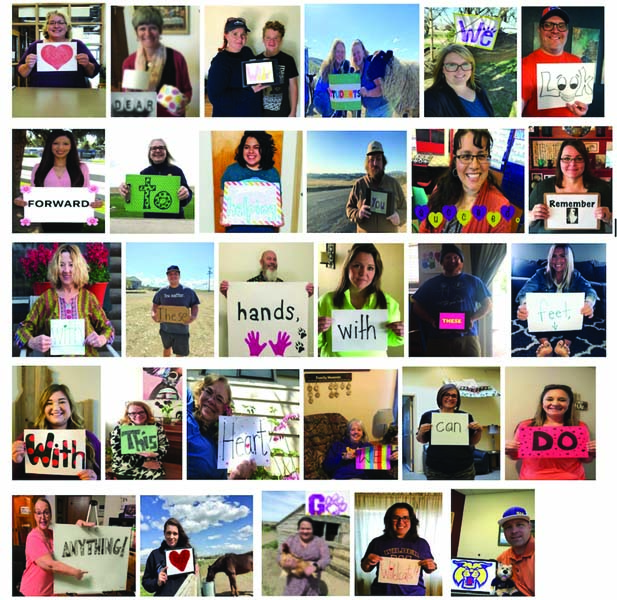
Faculty members.
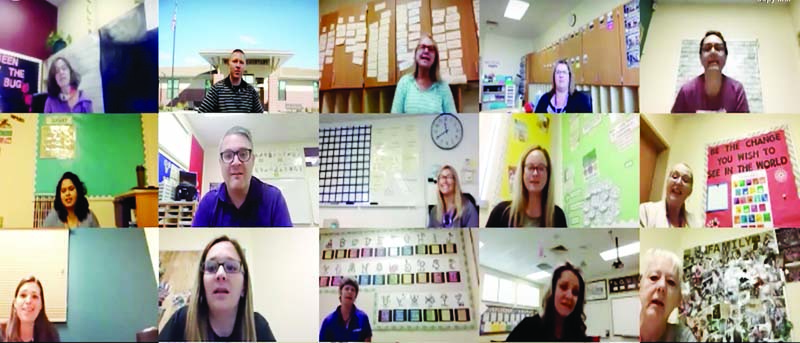
For example, rather than the students coming to the cafeteria for meals, the cafeteria became an assembly line for preparing lunch along with breakfast for the next day. Lunches and breakfasts were put into covered styrofoam containers and brown paper bags. School buses went to predetermined locations to hand out the meals. Sometimes, staff delivered the food directly to the homes of students.
During the first weeks of online classes last spring, we had to troubleshoot many technology issues, including making sure parents and students could access the programs with the iPads. But even having these computers available for each student was an unusual situation. It sprang from a partnership with the Apple Corporation that began in the spring of 2016, when the Wilder School District became one of the company’s ConnectEd schools through a program initiated by the White House. So our students already had devices and the infrastructure to be successful, and the school had years of training and implementation experience, which made the switch to remote learning much easier than it otherwise might have been. But familiarity with the technology wasn’t the only advantage. Our teachers, mentors, and students already had used the computers in ways that increased student motivation and joy in learning. We knew that everyone could create through drawing, photography, music, and electronic presentations. They could make opportunities to learn wherever and however they desired.
Even so, many students were worried about internet connectivity at their homes. Fortunately, most were able to use the internet plans already connected to the iPads and paid for by the district. A few who were unable to get online were provided separate internet access by the district. Despite such hiccups, when teachers took virtual attendance, more than ninety percent of students were present. Not only did learning continue to happen, but important emotional and developmental needs were also still provided.
Teachers invited me to many morning meetings of classes as they started their day. I observed science experiments on back porches, as students learned about the environment. In one case, they used cotton balls and paper towels to model ways to clean up oil spills. Students showed how resilient they are as they followed the directions of the project, improvising if they did not have all the ingredients or items for the experiment.
As the weeks went on, we adults at the school became more familiar with the students than ever before. For example, some teachers even found out the favorite cereals of students as they logged in while eating breakfast. Others were able to talk with parents more freely from the students’ home through the computer. Seeing students in a P.E. class I had joined online made me realize how they could enjoy the outdoors more even while attending remotely. I did stretches in my office as I watched individual students participate through their devices, listening to the instructions in their backyards or at their farms.
Through such interactions, I saw that even though it’s difficult, schools can continue to provide learning opportunities for students online. The many examples I saw last spring of creative engagement and resiliency among young people not only showed they can take ownership of their academic journeys, but also proved how motivated they are to learn.
I still know that having the children at school is best in most cases, but the impossible situations of last spring did allow students at Wilder Elementary to thrive in new ways. They gained skills in persistence, empathy, and striving for accuracy.
At the end of the 2019-20 school year, I was invited to listen to student presentations. One girl had written and illustrated a story based on Three Billy Goats Gruff. Her version was about three sisters who went to the store to buy toilet paper. Each sister had to pass a coronavirus test. Each passed, and then the coronavirus decided that the eldest sister was the one to attack. But she was prepared with her face mask as well as social distancing. What a joy it was for me to witness this kind of successful learning, even though it was virtual.
Some of these students chose to be part of our summer school program, in which learning took place in the building as well as online. I got a preview of how this fall’s term might look, as students coming each day had their temperatures checked, meals were eaten in classrooms, and distancing and masks were required. This experience helped me see what worked and where efforts had to be focused to better help students return to school successfully. The long hours that the Wilder team put in last spring made a huge difference. Despite COVID-19, our students still have had the opportunity to grow and reach learning goals.
This year, we’re offering options for our young people to be successful at home and at school. I think we’ve learned a great lesson: students can continue to transform the impossible into “I’m possible,” just as they’ve done during this unique time in their lives. They can overcome the coronavirus by taking the necessary precautions at school, and they can create educational opportunities no matter what the situation in which they find themselves. As we go forward, we keep this in mind.
This content is available for purchase. Please select from available options.
Register & Purchase Purchase Only
Register & Purchase Purchase Only

